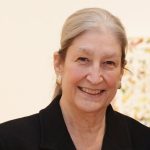Florence is dominated by Renaissance painting and sculpture. However, while it is not widely recognized locally, nationally or internationally, what we know as opera today began in Florence. Its birth represents an important epoch in the evolution of the Renassance and marks a very important milestone in the development of music.
Opera began as an outcome of the madrigal in the beginning of the 17th century and was performed exclusively for private audiences. Patronized by the Medici, composers wrote ‘spectaculars’ that featured dance, poetry, theater and song, to match the music and intonation of ancient Hellenistic tragedies, which was the earliest move toward a solo operatic singing style.
In 1589, in Florence, at the wedding of Ferdinando de’ Medici, a five-act comedy, La Pellegrina (The Woman Pilgrim) was an impetus to the development of this musical drama. These early pieces had only half-sung recitatives and the only instrumental pieces were non-recurrent instrumental interludes. Thus, early ‘opera’ was a collection of recitatives, separated by occasional orchestral interludes—the aim was to revive Greek drama.
In the 1590s, the Camerata dei Bardi, a group of humanists, whose members were musicians, poets and patrons and included Vincenzo Galilei (father of Galileo Galilei), Giulio Caccini, and Piero Strozzi, was formed, headed by composer, Count Giovanni de’ Bardi. A new monodic style (not yet an aria as we know it today, but between a recitative and an aria) developed from their meetings, representing the musical beginnings of opera. It is interesting that 35 years later, in 1625, Francesca Caccini (1587-1640), the daughter of Giulio, was the first woman to produce an entirely sung musical drama, which today remains one of the finest example of Florentine Baroque opera in history!
Around 1594, Jacapo Peri (1561-1633) completed the music for the earliest composition considered opera, La Dafne. First performed in Florence in 1598, in the Palazzo Corsi (owned by wealthy merchant and poet, Jacopo Corsi, who collaborated on the text). The palazzo, located on the via Tornabuoni, is now the Commercial Bank of Italy. Very little is known about the piece, for the composition was lost. Peri’s second collaboration, with Giulio Caccini, was Euridice, the libretto written by Ottavio Rinuccini, based on Ovid’s Metamorphoses, and composed to celebrate the wedding of King Henri IV of France to Maria de’ Medici. It was first performed at the Palazzo Pitti in Florence on October 6, 1600 and is the first opera score to survive. From it grew what we know today as Italian opera.
But, by the 17th century, theaters became venues for inaugural opera performances, especially Teatro della Pergola, built in 1656, originally a court theater used by the grand dukes and opened to the public after 1718. This theater is considered to be the oldest in Italy. Mozart, Donizetti and Verdi’s great operas were staged here for the first time, and by the 19th century, the best-known opera composers performed there. But today, opera is performed there only during the Maggio Musicale Fiorentino.
Note: On 31/05/07 and 01/06/07, at the Maggio Musicale Fiorentino, the Teatro Goldini will present La Dafne, a pastoral drama in the structure of a libretto—a prologue and six scenes—by Ottavio Rinaccini, and music by Florentine composer Marco Da Gagliano.








